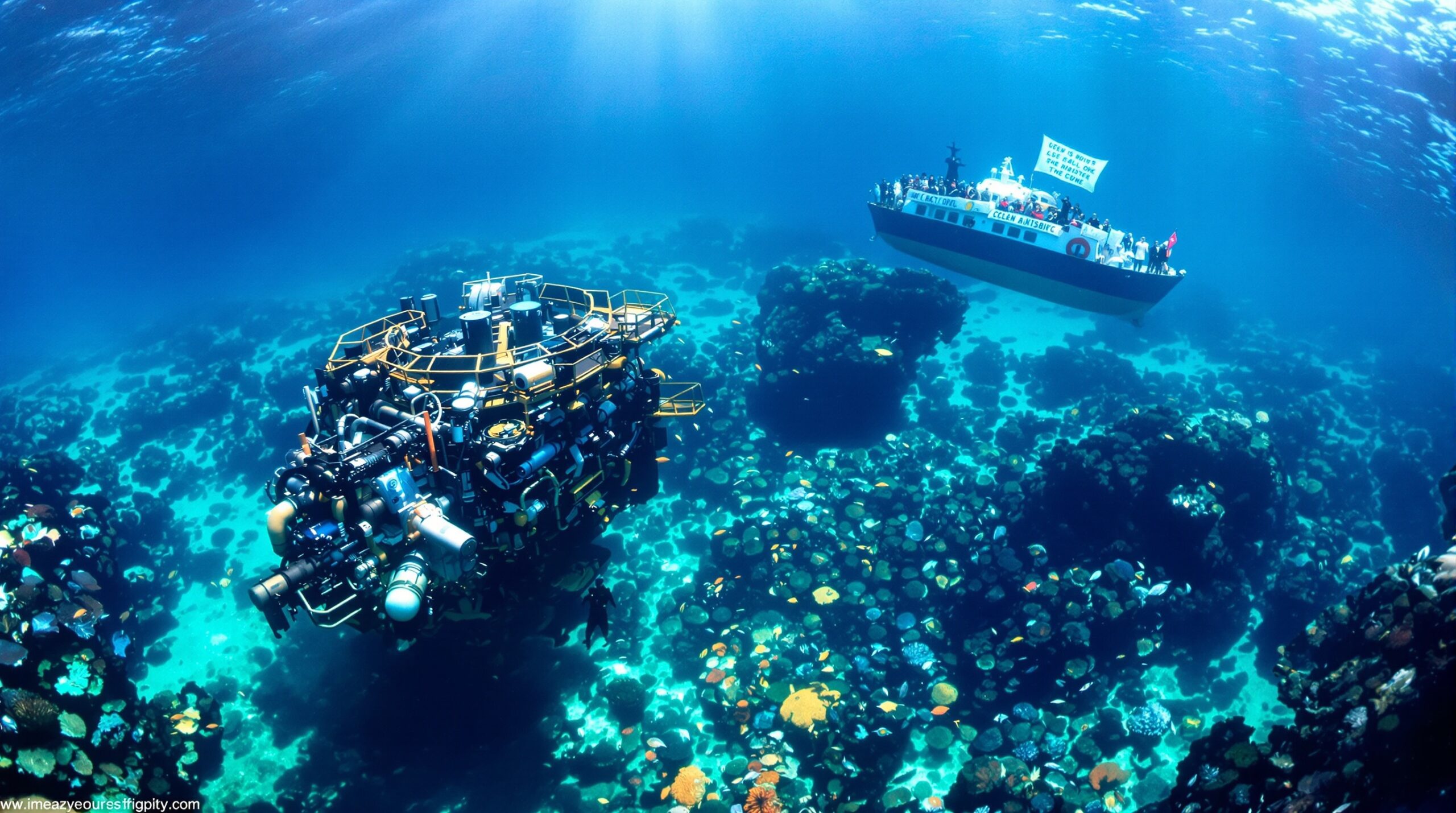Debates around deep-sea mining are growing. As global demand for minerals increases, so too does the pressure to mine the ocean floor. Deep-sea mining licenses are being issued by international authorities and eager governments. Conservationists, scientists, and industry leaders clash over the ecological consequences and economic benefits. This new frontier in mining has profound implications for ocean conservation.
Growing Demand for Critical Minerals
Global industries depend on metals like cobalt, nickel, and copper for electric vehicles, batteries, and electronics. Land-based sources are dwindling, and environmental impacts from terrestrial mining are concerning. Policymakers and businesses turn to the ocean floor, which holds massive quantities of untapped mineral resources. This transition aims to supply rapidly growing technology sectors with essential raw materials.
International collaborations, such as those led by the International Seabed Authority (ISA), have accelerated the licensing process. The ISA has issued exploration permits for large swathes of the seafloor in international waters. Nations with coastlines on mineral-rich regions, such as the Clarion-Clipperton Zone in the Pacific Ocean, are especially active in seeking licenses. This push to mine the seabed is a direct response to resource scarcity on land.
International Seabed Authority and Mining Licenses
The ISA regulates mineral-related activities in the international seabed area beyond national jurisdiction. Since the early 2000s, this United Nations body has allocated more than thirty exploration contracts. Governments and private companies now possess legal rights to prospect for minerals under international waters. These licenses cover massive tracts of the ocean floor, some exceeding tens of thousands of square kilometers.
Exploration activities focus mainly on three types of mineral deposits: polymetallic nodules, cobalt-rich ferromanganese crusts, and polymetallic sulphides. Each presents lucrative opportunities for mining companies. The ISA insists that environmental principles are integrated into its regulations. However, critics argue that scientific understanding of deep-sea ecosystems is insufficient to ensure effective protection.
Ecological Concerns and Conservation
Deep-sea ecosystems are some of Earth’s last true wildernesses. These habitats host unique species, many of which are undiscovered or poorly understood. Organisms living at great depth often have slow growth rates and fragile life cycles. Recovering from disturbance can take centuries or longer.
Mining activities risk causing irreparable harm. Sediment plumes generated by extraction can smother filter-feeders and disrupt food webs. Heavy machinery may directly destroy habitats, including fields of manganese nodules hosting specialized communities. There are also concerns about the release of methane and toxic chemicals that could harm marine life far beyond the mining sites.
Conservationists stress the lack of baseline data. Many deep-sea areas have never been surveyed. Ecologists worry that mining could lead to species extinctions before their discovery or study. This urgency fuels calls for a precautionary approach and moratoriums on new mining licenses.
Political and Scientific Tensions
The rush to mine the deep sea has sparked global divisions. Some nations and industry groups argue that deep-sea mining is more sustainable than land-based alternatives. They highlight the lower human cost and fewer emissions from undersea extraction. However, prominent countries such as France, Chile, and several Pacific island nations call for a pause or outright ban on mining licenses.
Scientists advocate for expansive marine protected areas before mining begins. They suggest a thorough evaluation of the possible impacts on biodiversity and ecosystem services. International conferences regularly host debates between environmentalists, indigenous advocates, and mining company representatives. These discussions rarely produce consensus, reflecting deep uncertainties about the future of this contentious industry.
Calls for Moratoriums and Responsible Regulation
Global environmental organizations have launched campaigns for a moratorium on deep-sea mining activities. Groups such as Greenpeace, the Deep Sea Conservation Coalition, and the World Wide Fund For Nature warn of irreversible destruction. Their advocacy has led to temporary suspensions of mining activities in several jurisdictions.
Supporters of mining urge balance. They claim mining regulations, environmental assessments, and technological improvements can mitigate risks. The ISA faces mounting pressure to strengthen its regulatory framework and ensure transparency. Yet, calls for delay intensify as the world learns more about the complex dynamics of the deep ocean.
Technologies and Future Prospects
Mining companies have developed new technologies to reach and extract minerals from extreme depths. Autonomous underwater vehicles, remotely operated vehicles, and advanced sensors are in active use. These innovations aim to reduce environmental impacts and recover valuable resources efficiently. However, long-term ecological effects remain largely unknown, keeping scientists and watchdogs alert.
Several pilot projects have demonstrated possible methods for containing sediment plumes and monitoring underwater ecosystems. Stakeholders argue that investments in science and monitoring technologies are crucial. They push for adaptive, evidence-based management strategies if mining proceeds. Such adaptive management requires ongoing research, monitoring, and the integration of new information into regulatory frameworks.
Balancing Economic Benefits With Ocean Health
Proponents of deep-sea mining emphasize the opportunity to supply critical minerals with lower environmental and social costs. They point to declining land-based reserves and project benefits for global energy transitions and emerging technologies. They argue that mining could generate jobs and revenue, especially for developing island nations and those with limited alternative resources.
Detractors counter that these projected benefits do not justify potential losses to ocean health and biodiversity. They emphasize the importance of intact marine ecosystems for global climate regulation, fisheries, and future scientific discovery. Striking a balance between economic development and conservation remains a fundamental challenge for international policymakers.
The Road Ahead for Deep-Sea Mining
Policymakers, industry leaders, and conservationists agree: deep-sea mining will shape the future of ocean conservation and resource management. International legal frameworks and scientific knowledge must evolve in step with industry ambitions. The debates over deep-sea mining licenses reflect a crucial turning point for the world’s oceans.
Greater transparency, collaboration, and precaution are needed to protect marine life while addressing the world’s demand for critical minerals. As technology and environmental science advance, decisions made today will echo through ocean ecosystems for generations to come. Only a careful balance can secure both mineral resources and the unique biodiversity of the deep sea.


